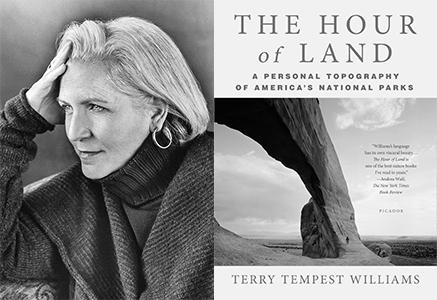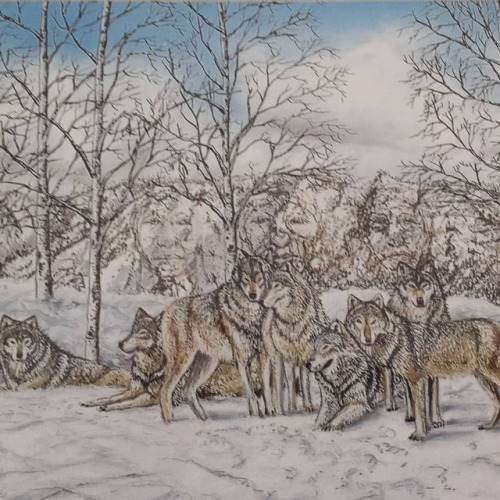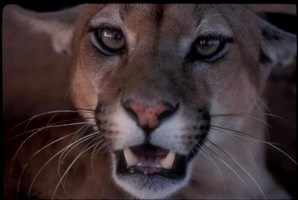
(Originally published 7/22/2017 but I am re-pubbing since I loved this reading so much, and since this wonderful author has inspired me to tour Yellowstone National Park this upcoming spring.)
Last night I went to a talk at Changing Hands bookstore given by Terry Tempest Williams discussing her latest book, The Hour of Land. She told a story about her visit to Yellowstone National Park that I thought was beautiful and fitting for this blog.
She and her husband wanted to catch a glimpse of white wolves, so they found a little lookout over a canyon bed, where they saw a bison carcass being eaten by several coyotes and birds. Their guide told them that yesterday the bison had given birth to a stillborn calf and hungry wolves had attacked her during this vulnerable moment. They continued watching as suddenly the coyotes’ hackles rose and the birds quickly fluttered away, followed by the coyotes. They then saw a majestic white wolf, who came down from the hill, licking his lips. He ate more of the carcass. The next day, they returned in hopes of seeing the wolves again. Instead, they saw that the carcass had been completely eaten. Only the skeleton remained. Soon, a trail of bison appeared. They walked in a line toward the bison’s bones, then walked in a circle around her, their pacing identical, their bodies evenly spaced apart. They made a circle three times, then stopped and lowered their heads toward her bones. After a moment, they raised their heads and walked, again in a line, their bodies evenly spaced, up the hill, leaving only one small buffalo, who stayed with the mother.
She let us envision it for a moment, then said, (I’m paraphrasing) “We are not the only species who loves, who feels, who thinks, who grieves.” Yes, something anyone who’s a close observer of animals knows very well.




